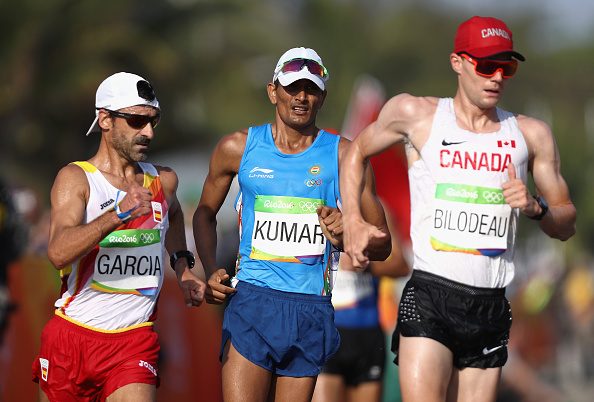Race walking | A unique combination of speed, endurance, strength and flexibility
The Summer Olympic Games is arguably the greatest and biggest event on the sporting calendar. Whether or not one's own country has a chance of winning a medal at the quadrennial extravaganza, people world over follow the Games closely, a tradition that has continued over the years.

As many as 191 million people from urban India tuned into the Rio Olympics last year. While the big chunk of the viewership was for the glamourous sprints or the swim competitions, sports followers do hold a huge amount of respect for endurance sportsmen, particularly the marathon runners.
However, it is the discipline that has the walk that is the longest-distance race in the Games. The 50km Race walking can last well over three and a half hours.
Vincent Peters, USA Track and Field Race Walking Committee chairman, calls the sports "a unique combination of speed, endurance,
Race walking is an endurance sport which is technically challenging as well. There are two major rules in the sport. The most important one is that one foot must be in contact with the ground at all times. An athlete cannot take a leap in order to get ahead of the competition. The second rule is what gives the athletes the "funny wobble". The leg that has been put forward should always be straightened, the knee should be "locked" (the athletes are not allowed to bend their knees after landing the advancing leg), from the moment the first contact is made with the ground the entire weight is transferred to that foot. Another reason why the athletes have "that funny walk" is because it gives them an advantage over someone who doesn't do it. The swivel of the hips helps the athletes take longer strides while complying with the rules of the sport.

© Getty Images
There
Races are held on the track as well was on the road and the number of officials can vary. A chief judge is appointed ideally before the race and is accompanied by a minimum of five judges to a maximum of eight judges. Should an athlete fail to comply with the rules of the sport, the officials can issue a "red card" to the player and advise the Chief Judge about the same. The walker is eliminated should he receive three red cards, but the cards have to be issued by three different judges of three different nationalities.
Also Read: From Egypt to Rio - Tracing the steps of racewalking
As the races at the Olympics are held on the road, the circuit is always between 2 and 2.5km. Since the event has to start and finish in the stadium, the circuit is located as close to the stadium as possible. The European dominance in the sport was ended by Mexican Raul Gonzalez who became the first non-European to win with a world record time in the 50km race. Australian star Nathan Deakes earned a name for himself as well when he won both events at two consecutive Commonwealth Games. The sport has slowly and steadily gained popularity in India and athletes have been knocking on the door as far as the medal places are concerned. Gurmeet Singh became the first Indian in 34 years to win a gold medal at an Asian championship or Asian Games when he won the 20 km race walk championship. Harminder Singh won India's first racewalking medal at the Commonwealth Games while KT Irfan and Manish Singh Rawat managed to make a name for themselves in the Olympic Games.
The Max Bupa National racewalking Championship will take place in New Delhi on 18-19 February.
This article was produced on behalf of Max Bupa Walk for health by the SportsCafe.in marketing team and not by the SportsCafe.in editorial staff.

Comments
Sign up or log in to your account to leave comments and reactions
0 Comments